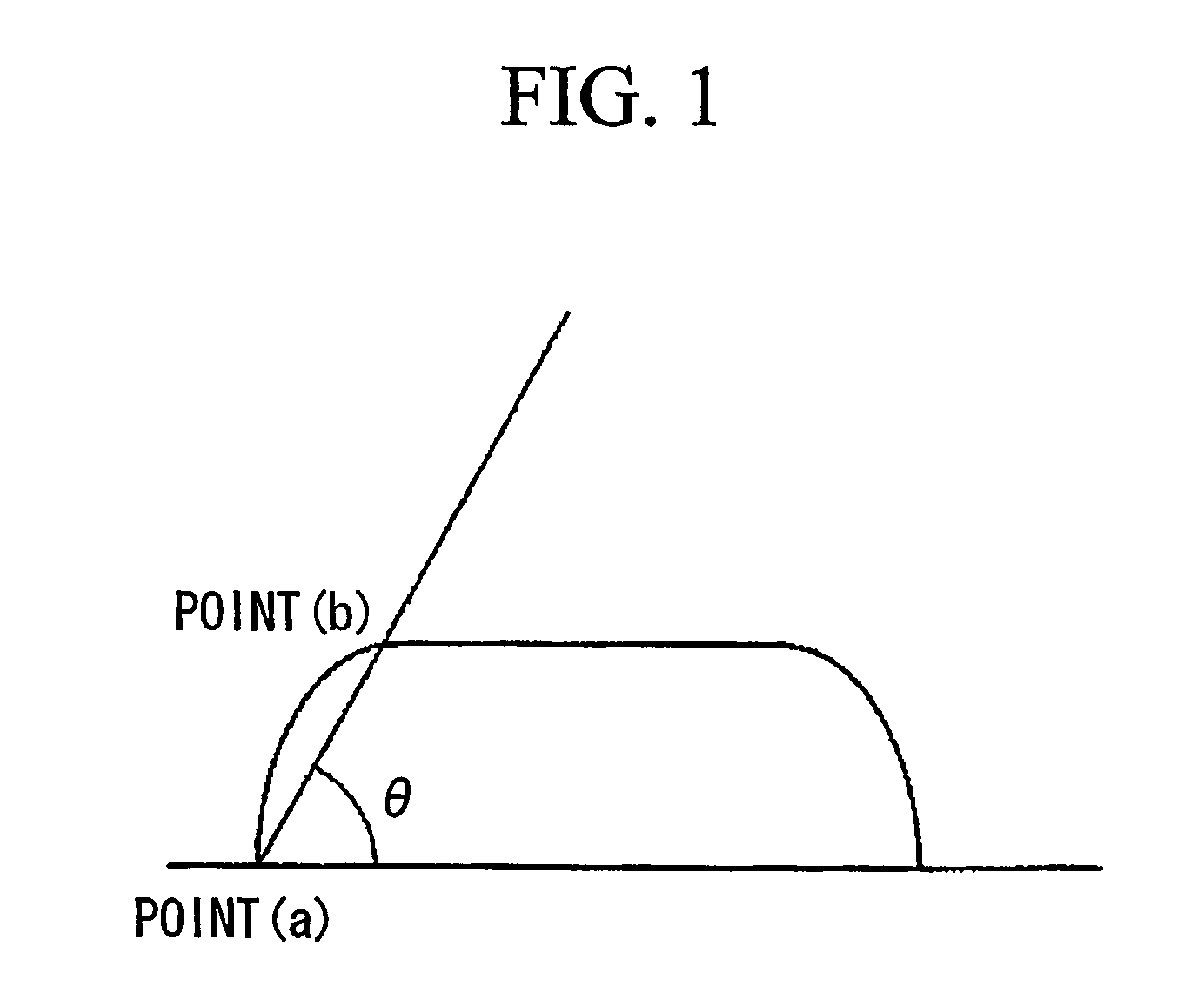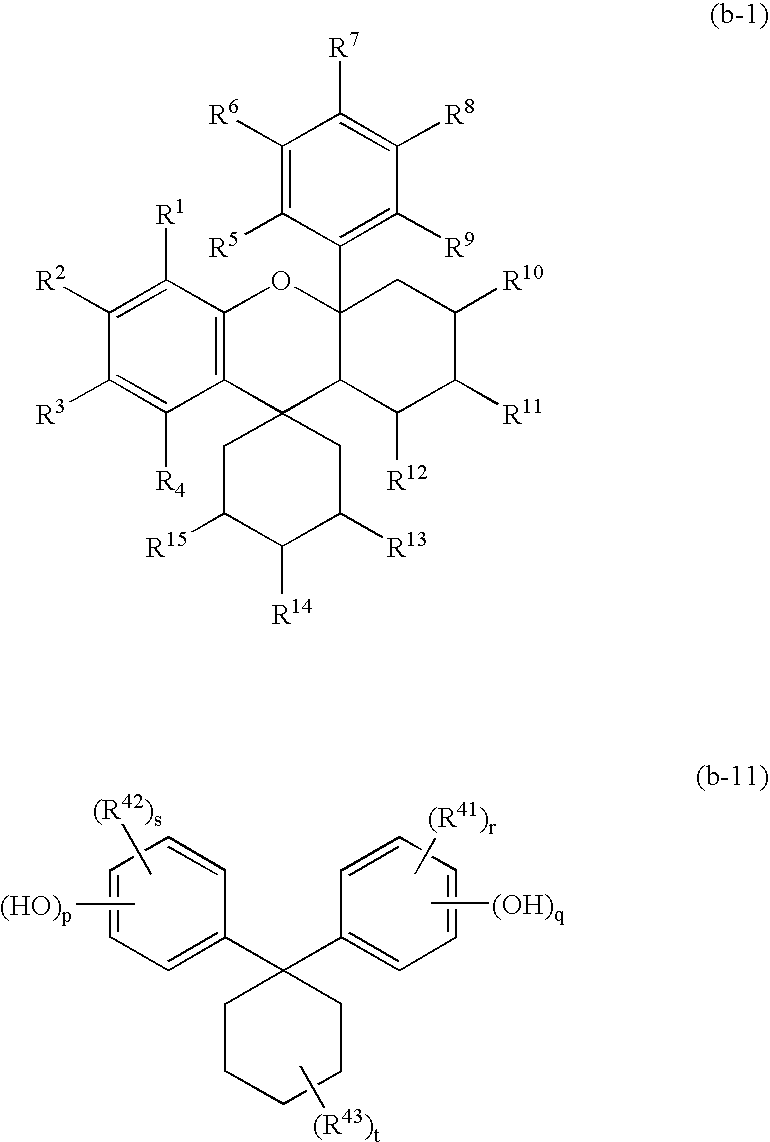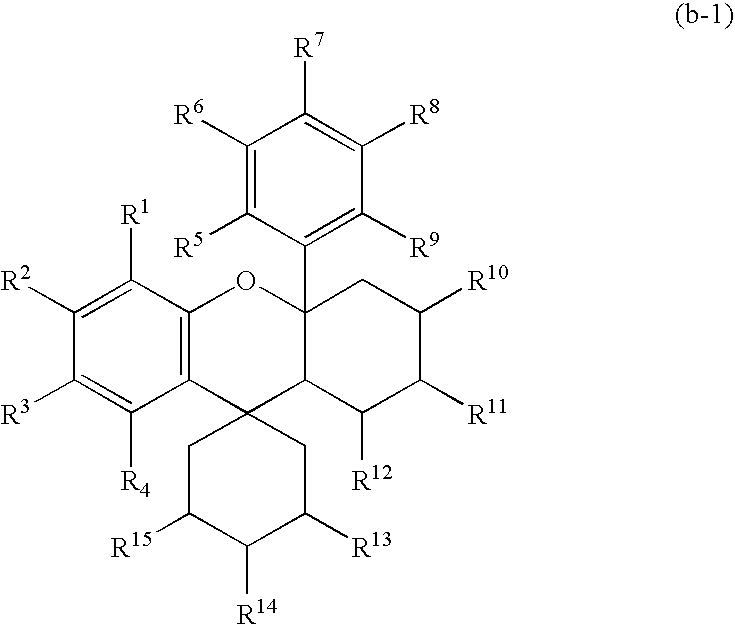Positive photoresist composition and method of forming resist pattern
a composition and composition technology, applied in the field of positive photoresist composition and a method of forming a resist pattern, can solve the problems of difficult formation of resist patterns with excellent resolution and good perpendicularity under thick film conditions of at least 3 m, and marked deterioration of heat resistance, etc., to achieve excellent resolution, excellent resistance to deterioration of resist patterns, excellent perpendicularity
- Summary
- Abstract
- Description
- Claims
- Application Information
AI Technical Summary
Benefits of technology
Problems solved by technology
Method used
Image
Examples
synthetic example 1
Synthesis of Novolak Resin 1 (m / p / 235TMP=35 / 40 / 25, Mw=4200, Mw / Mn=2.5, Substitution rate=3.8 mol %)
[0136]1. Control of the molecular weight (Mw) and the degree of distribution (Mw / Mn) using a fractionation operation
[0137]125 g of a condensation polymerization product (Mw=2600, Mw / Mn=3.3, low molecular weight fraction of trimer level or below=10.8% by weight) produced by a dehydration condensation reaction between m-cresol, p-cresol and 2,3,5-trimethylphenol (molar ratio 35:40:25), and formalin was placed in a 2 liter beaker, and 830 g of methanol was then added and stirred to dissolve the product.
[0138]Subsequently, 313 g of pure water was added to generate a precipitate, and this precipitate was collected by filtration, yielding a novolak resin (I) with a controlled molecular weight and degree of distribution (Mw=4300, Mw / Mn=2.5, low molecular weight fraction of trimer level or below=3.5% by weight).
[0139]2. Esterification Reaction
[0140]50 g of this novolak resin (I), and 4 g (0.01...
example 1
[0144]
Component (A): novolak resin (II) from the100parts by weightsynthetic example 1Component (B): the compound of the above18parts by weightformula (b-4)
[0145]The above components were dissolved in 155 parts by weight of a mixed solvent of ethyl lactate and butyl acetate (8:2), and the resulting solution was filtered through a membrane filter with a pore size of 0.1 to 0.2 μm, yielding a positive photoresist composition. The thus prepared positive photoresist composition was evaluated in accordance with (1) to (4) above. The results are shown in Table 1.
example 2
[0146]
Component (A): novolak resin (II) from the100parts by weightsynthetic example 1Component (B): the compound of the above18parts by weightformula (b-4) / the compound of the aboveformula (b-12) (a 1 / 1 by weight mixture)
[0147]The above components were dissolved in 150 parts by weight of a mixed solvent of ethyl lactate and butyl acetate (8:2), and the resulting solution was filtered through a membrane filter with a pore size of 0.1 to 0.2 μm, yielding a positive photoresist composition. The thus prepared positive photoresist composition was evaluated in accordance with (1) to (4) above. The results are shown in Table 1.
PUM
| Property | Measurement | Unit |
|---|---|---|
| thickness | aaaaa | aaaaa |
| thickness | aaaaa | aaaaa |
| temperature | aaaaa | aaaaa |
Abstract
Description
Claims
Application Information
 Login to View More
Login to View More - R&D
- Intellectual Property
- Life Sciences
- Materials
- Tech Scout
- Unparalleled Data Quality
- Higher Quality Content
- 60% Fewer Hallucinations
Browse by: Latest US Patents, China's latest patents, Technical Efficacy Thesaurus, Application Domain, Technology Topic, Popular Technical Reports.
© 2025 PatSnap. All rights reserved.Legal|Privacy policy|Modern Slavery Act Transparency Statement|Sitemap|About US| Contact US: help@patsnap.com



